The final part of this Sophie interview series is about a legendary live show she performed in Los Angeles in 2017, a week or so after our conversation in parts one and two. The term “operatic” is overused, but I can’t think of a better word to describe the grandeur of her vision—each dazzling scene unfolding to reveal another corner of Sophie’s world.
I wasn’t sure if I was going to share this because most of ya’ll lack the context to envision what went down. Maybe, I thought, you just had to be there.
Then I realized that, given the paucity of Sophie interviews, every drop she released to the public record pools her deep well of wisdom. I also listened back to the interview—which we did over the phone as she was driving in her car—and realized that this show was crucial to Sophie’s transformation, coalescing her music’s themes of kink and body augmentation, emoting through machines, ego dissolution, etc into visceral and physical forms. Her debut performance after releasing “Whole New World,” it marked the first time she’d stepped out from the DJ booth to sing, strut, and dance on stage next to her collaborators, the singer Cecile Believe and dance duo FlucT. As usual, the yt male critics didn’t get it, but the queers in the pit were rabid.
So here is the final part of our interview series. To everyone who loved Sophie, and especially her queer children, I hope this peek into her inner thoughts, at a time when she was feeling happy and fulfilled, brings you some comfort and healing. I look forward to reporting out the impact of Sophie’s extraordinary life for a long time to come.
Rave New World is a newsletter entirely supported by paying readers, whose generosity has made this series possible. If you appreciate this work and would like it to keep it going, please subscribe~
Michelle: How are you feeling post-show?
Sophie: I am feeling really fulfilled and relaxed. Grateful that we got the opportunity, and just enjoying talking to people and hearing their reactions. A lot of my friends came, people whose opinions I really valued, and they had a really strong reaction. My mind was blown by what people were saying. That was really rewarding and satisfying.
M: What kinds of reactions have you gotten?
S: It’s interesting hearing people saying they had particularly strong reactions to all different parts of the show. A lot of people seem to have responded to the laser part and finale, and this intersection with “Ponyboy” and “Face Shopping.” I suppose there’s a lot of content to digest—all new music, the visual presentation, as well as the works of my collaborators.
M: I was near the front, and people were going insane. I don’t know if been to many shows where people were that fucking excited, and even shocked or bewildered at points, like, what the fuck is happening?!—that was really cool.
S: That’s something I’m not really used to as a performer, because I’m used to interacting with an awkward dance audience where the only real gauge is whether people are dancing.
Photo by Koury Angelo/RBMA
M: Could you tell me about the outfits you wore? I was particularly interested in the fetish wear. Girls in the audience were shouting, “Thank you mistress!” I don’t know if you heard?
S: [laughs] I would have appreciated that.
M: I’m curious about the materials you were wearing, and how those materials related to the sounds themselves?
S: That’s something consistent in the music, and there’s a parallel between the clothing I’ve been drawn to, particularly latex, rubber and PVC. Perhaps that’s related to why I’ve been more drawn to synthesized tones and textures of music. That’s pretty consistent throughout since I started performing as Sophie: the main materials I would wear were rubbers and latex. That’s more of a question for a therapist I think, about why that’s the case. That’s always been my thing I suppose. It’s only slightly more accentuated here because we had the opportunity to have different looks, and whole body looks became more important.
It’s also important to note that it’s not purely a fetish look because there’s certain elements which are softer, and it’s important for me to have those two elements at play there. Each of the looks I really try to offset soft and hard, and that seems relevant to the material as well. It’s really essential to have both of those elements at play in a lot of the songs I do, because that’s more reflective of who I am.
M: I remember there was this one song where you were wearing all pink. I loved that look.
S: That’s just a color I’ve been particularly drawn to. The Sophie colors are pink, black and white, and that’s been a color palette that’s evolved through all the aesthetic choices I’ve had to make.
M: The floor seemed to be coated in some sort of black reflective material?
S: It was, yeah. It was a marley floor. That was important to the show as well. It relates to the material interest in consistent textures that I’m drawn to. I wanted to accentuate the body movements of Cecile B, and FlucT, and we wanted to exaggerate the movements. By having the reflective floor, we had the reflections of the LED screen and the lighting and movement on stage.
M: When you started working on the show, did you begin with a concept or a phrase, a feeling, an image, or one particular idea?
S: Now that you’ve put it like that, I would say “Whole New World” was one of the first things that occurred to me. In the very early stages of developing the song, I was thinking about presenting it on exactly the stage you saw in the show. It became very clear that I wanted to collaborate with FlucT and it would be more of a theatrical performance, the way the whole thing played out. The way we wanted to break down the traditional format and use more theatrical language, different scenes, and characters interacting. Move through different zones and feelings rather than having a particular “lead singer and backing singers” thing going on. It was important to break those things down and have the whole stage shifting and positions shifting.
M: Who is Cecile B?
She is a friend of mine, an extremely capable and talented songwriter and producer. We developed a lot of this new material closely together and so it made sense for us to perform it together. It was a new way of working with Sophie material, and so essential to what I had in mind for it. To have her brain working alongside mine—it’s one of several entirely new elements that has come into the Sophie music that expands its expressive capabilities a lot.
M: What kinds of materials did you provide to Cecile B and Fluct when you all were discussing what to do?
S: Fluct and I have collaborated before on a few projects and have an understanding and respect for each others’ practice. It was really about discussing the themes in the music and seeing how that interacted with the language they’ve developed in their practice. With Cecile, we worked closely on the development of the music, and we really understood the themes quite clearly, working on those things together, so there was quite a rich internal world we’d built up for ourselves. Every decision that needed to be made, it was really a case of referring back to themes we’d discussed and seeing how they could be presented and communicated.
Photo by Koury Angelo/RBMA
M: What were some of those themes?
S: Feelings and machines, body augmentation, existential questions, material and immaterial worlds, sex, play… really, this interaction between feelings and machines seems to be a strong theme as well.
M: Can you elaborate on how any specific theme was synthesized into the show?
S: In the first section of the show, you had this very egoistic character coming out, and the music is very hard, and talking about this promise of a whole new world. Then it moves into an industrial construction sound of this world being built up. Quite quickly, that starts being deflated and you get this section called “Pretend World” where the hard industrial sounds get smushed and deflated and become hydraulic pump sounds. This world becomes made of air. And this character gets swallowed up and eaten by its own ideas.
Then you have this resolve of this cover of [Nina Simone’s] “Feelings,” where she ends the song talking about “no matter what drugs or what I say or do, I’ll always have my feelings at the base, because that’s all there is at the base.” I suppose that was what I was thinking about. That interaction between the material and immaterial world, and where feelings are placed amongst all of these elaborate material constructs and ideas. Does that make sense?
M: I love that there is such a clear narrative.
S: It’s definitely an ambitious way to start a show because you build something up really quickly and dissolve it very quickly in the first ten minutes of the show which is an atypical narrative, where you’re trying to build tension or construct something over the course of the show. We’re essentially trying to destroy something in the beginning.
M: That reminds of what you once said, about how a song should communicate clearly what it’s about or what’s interesting about it, right in the beginning.
S: I love when that happens in the operas—where you get the overture, an introduction to the main themes of the music, and you really get a taste of what the whole world that you’re about to enter is about. I suppose it’s a pop song narrative projected on a live show context. Certainly there’s a lot of content.
Photo by Koury Angelo/RBMA
M: What kind of gear were you playing on stage? Was some of it… fake? I noticed sometime when you were singing, you’d lift your mic up to make it clear that you were lip-syncing.
S: I think the focus for me was on presenting the material as clearly as possible, and so there was always decisions taken about what would be performed live or double tracked, or recorded. And what made the decisions for us was what’s gonna communicate more clearly. So it was different in every part.
Up to this point I’ve performed everything entirely live on my synthesizer and it really doesn’t read different from an audience perspective. It’s obviously something I can do, and I’m not that impressed by someone doing something live. I think it’s more about the content itself. It really was a case of what is gonna be better sound and clearest to communicate. There was obviously a lot of live singing and sound design, it was really different throughout the show.
M: What was the synth you had up there?
S: It was the same synth I’ve used in all my performances that I’ve developed my sound design with and have spoken about quite a lot in the past, the Elektron Monomachine. It’s become my instrument of choice. I’m very fast on it, I can express myself very precisely and quickly, I can realize all I have in my head on it quickly. So that’s what I had on stage and was doing the parts I felt was necessary and was gonna add to the content.
M: How does this new work build upon what you’ve done previously, not just in terms of the sound but the atmosphere and overall effect?
S: I think it does a few different things of clarifying and explaining what was there before, expanding on it. I think it’s both of those things. I feel that the way all my Sophie music from this point onwards is really going to help further contextualize what’s important to me and what I’ve tried to express all along. But the more material I can work on, the more thoroughly I can build up this world and explain the different parts of it. So I feel it’s very much a continuation of what I’ve done before. And perhaps a more thorough realization of what’s essential to me and my intentions.
M: What sort of feelings were you hoping to elicit from people?
S: One theme seems to be the grey area between feelings, which is something I’ve been experiencing a lot personally, and am really just trying to work out and put a name to them, or maybe just let them be as they are, and definitely trying to experience and translate them through music. I’m not sure if it’s something you can put an exact word on to, it’s an amalgamation of feelings you experience in the world, or any confusion, being mystified and just floating in the richness and complexity of this time we’re living in. This is a feeling I’ve been having a lot. And not really casting judgment on those things, just trying to present those materials next to one another, and allowing people to feel what they will feel, rather than directing a particular way of feeling about those things.
Photo by Koury Angelo/RBMA
M: What did you ultimately get out of the show?
S: An opportunity to communicate more. It’s an opportunity to present things that I care about, with the help of people I care about respect a lot, and whose opinions I value and want to listen to. Those are a couple things that are rewarding to me. [loud beeping sounds] Sorry I’m getting a mess here trying to park my car.
M: Oh I forgot to ask you about the laser part!
S: Really, you’ve experienced a lot of visual stimulation in the 15 minutes before it, and I wanted to allow for a more internal experience in those times. I wanted to put the focus on more micro-like sound design and the shapes of the wave forms. It’s a stark contradiction from the way we started the show, with bold words and physical presences on stage. It really breaks things down to a somewhat sound wave level, something fundamental, and physical in a different way. It’s almost breaking it down to a biological level in some sense. It’s just highlighting the interaction happening between the sound waves and ears, and putting focus on the oscilloscope level.
M: You actually started out the show with the Doppler effect sound right? We talked about that last time.
S: Yeah, I was using a lot of Dopplers in the beginning, yeah. It’s a signifier of motion and we’re trying to move throughout the space in the show and Dopplers were a way to reflect that. It’s an emotional sound for me. It’s very visceral.
M: How is it emotional? Because of its viscerality?
S: I just remember having that experience of hearing planes or cars pass. And I don’t know, it does have an emotional effect on me. Maybe you’re aware of time passing in those moments, or situations lost, or things evolving.
M: And you ended it with noisy static sounds?
S: Well “It’s OK to Cry” is the explosion at the end. Static is not so descriptive as a sound to me. It’s just white noise, which is random chaos. Most of the time I try to build in remnants of whatever it is, Doppler or hydraulic or whatever like that. It’s interesting these sound design ideas I’ve had, I’ve built up a compound texture that I’ve built into this album, which has all these elements of construction of movement, synthetic materials, digital technologies, the time we’re in with technology, audio manipulation. Those are the built-in textures of this album. So you hear them spread throughout the whole show.
M: Cool, well thank you so much for your time and thoughtful responses.
S: Thank you for your thoughtful questions, and for coming to the show.
M: It was really amazing. Keep in touch, and I’m sure I’ll see you around.
S: Yeah, I’ll see you around! Thanks, Michelle.

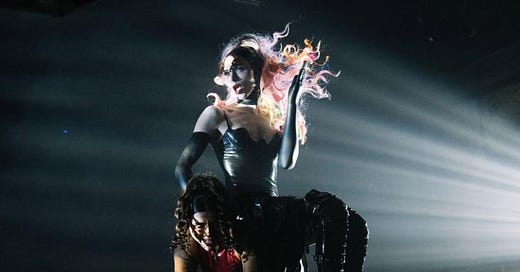


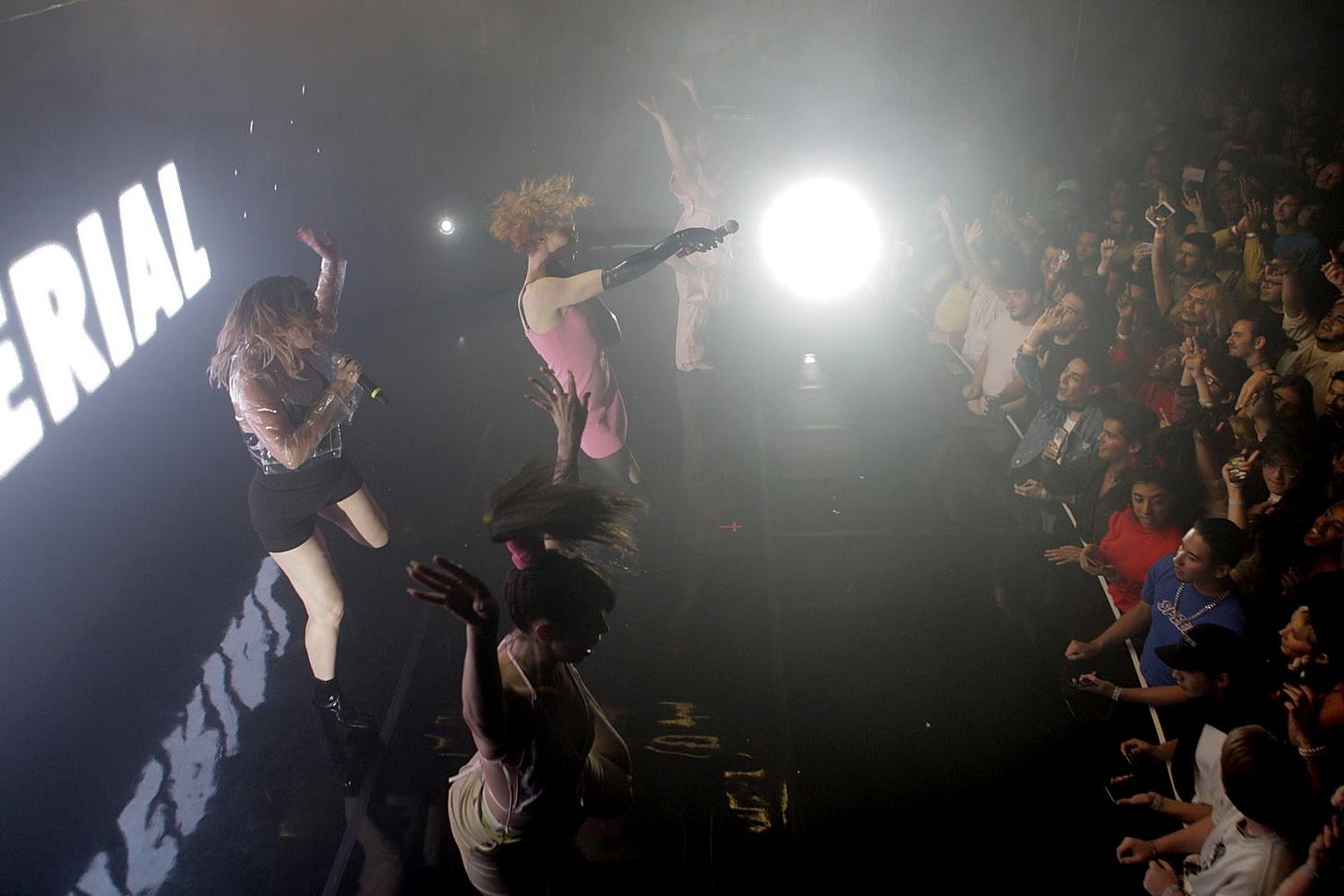
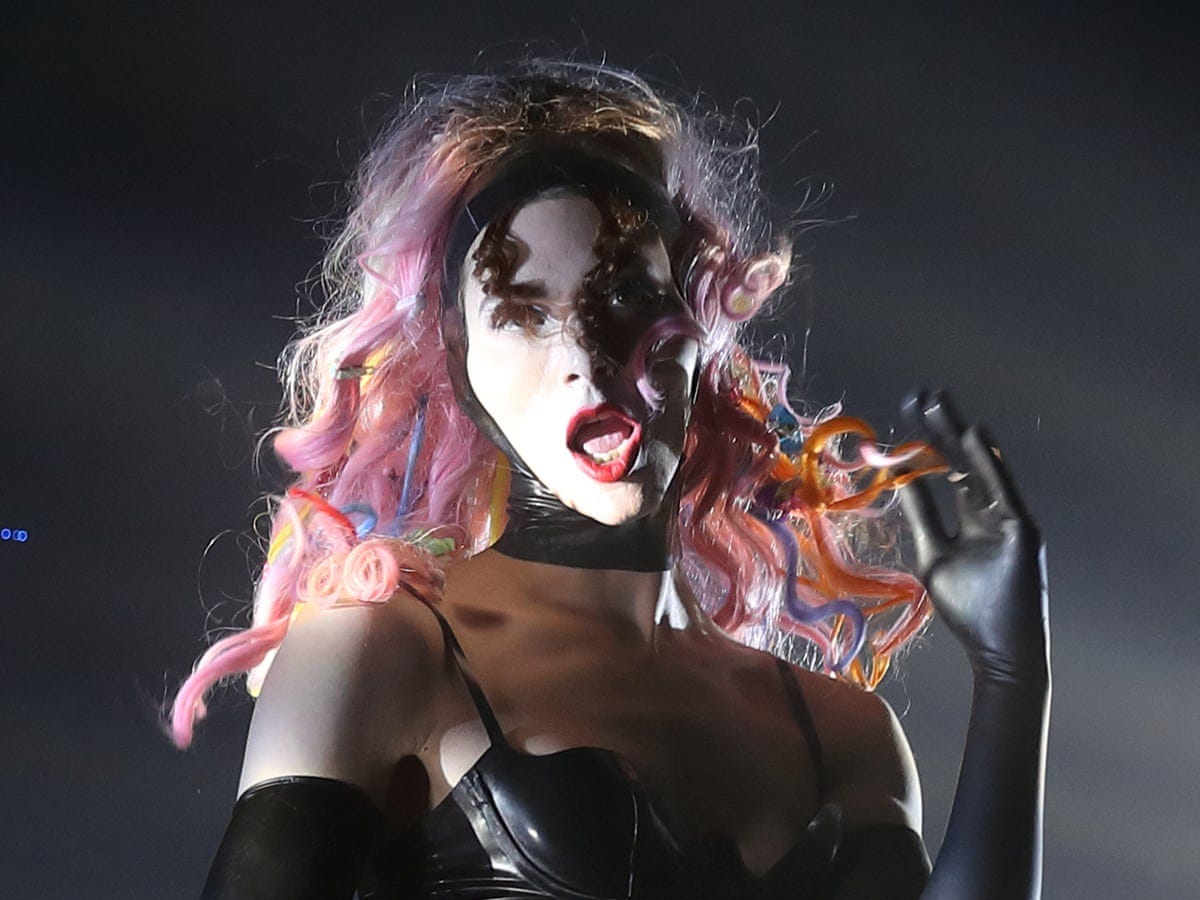

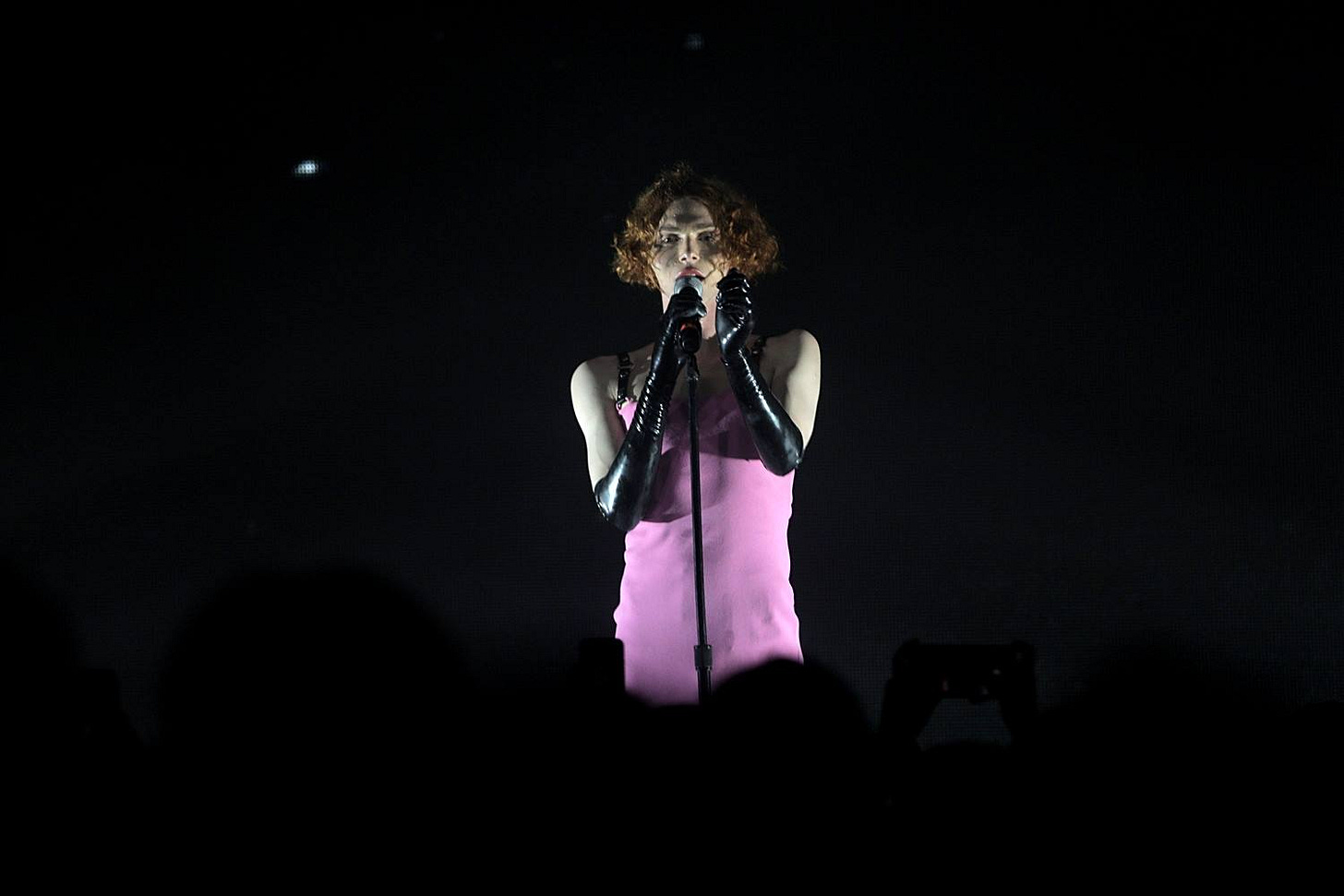
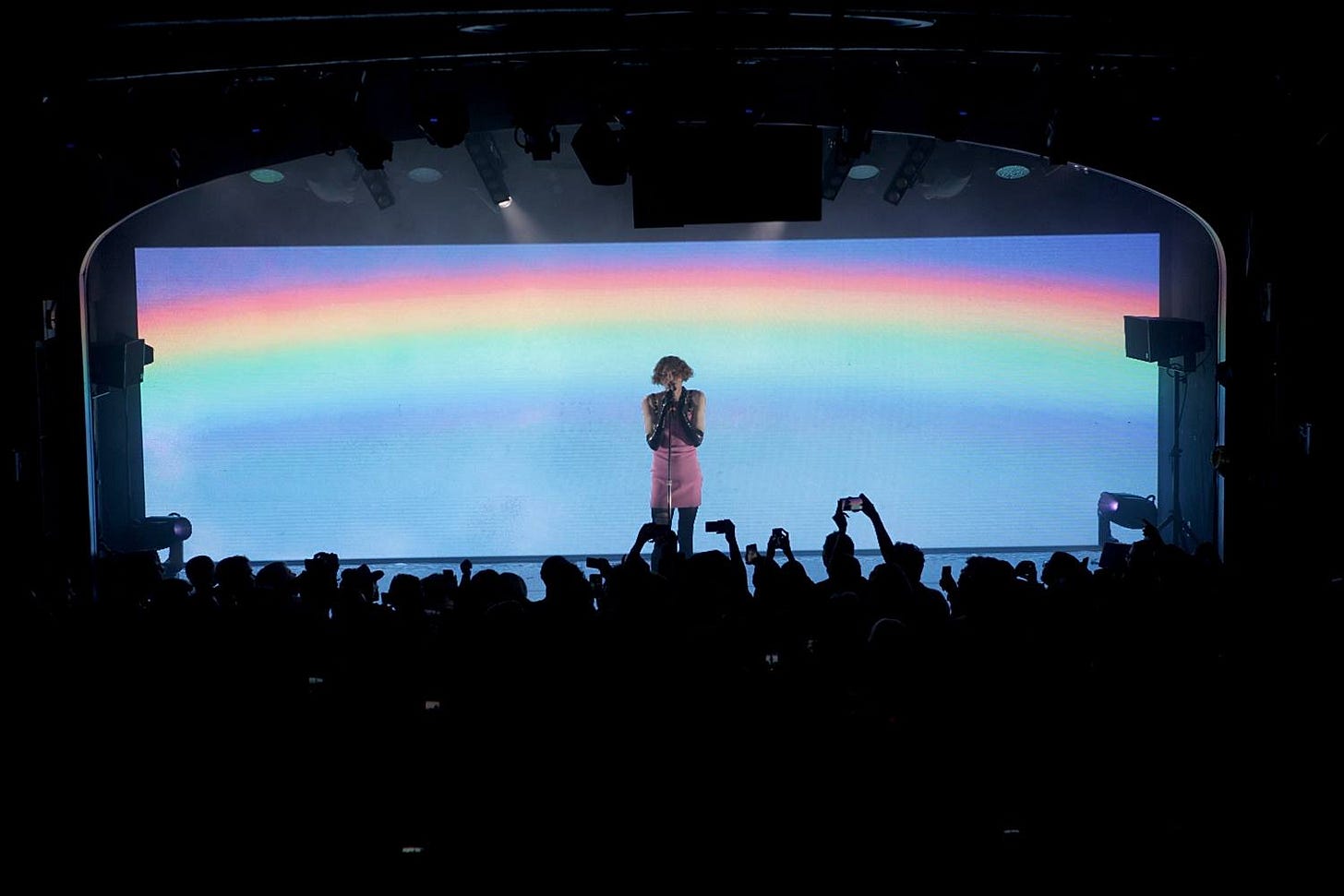
..and thank you forever Michelle